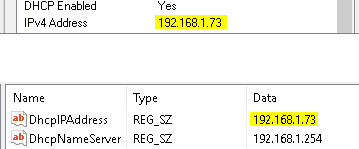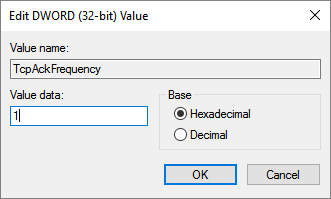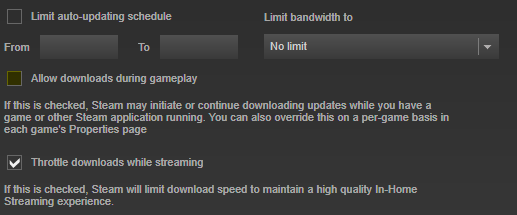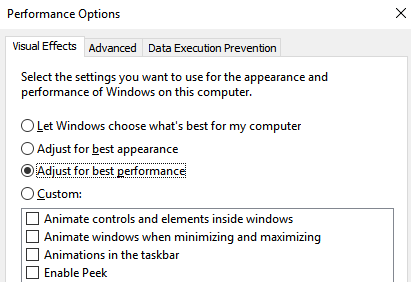While many gamers have worked so hard to avoid Microsoft’s aggressive marketing tactics, a growing number of users have settled into the newest Windows installment.
Windows 10 is an ideal OS for gamers as it incorporates several valuable programs and features. Of course, with every new OS, not every feature is perfect.

We’ve put together a list below of simple tweaks that users can take advantage of in order to get the most effective use out of gaming with Windows 10. Do note: each listed optimization will require a restart to take effect.
Disable Nagle’s Algorithm
Nagle’s Algorithm groups together data packets at the cost of achieving a smoother Internet connection. But having Nagle’s Algorithm enabled on your device when gaming online can contribute to latency issues.
To disable, open Registry settings, which can be found under Start > type regedit > Regedit. From there, click the drop down menu until you see HKEY_LOCAL_MACHINESYSTEMCurrentControlSetServicesTcpipParametersInterfac. Under Interface in the drop down menu, you’ll notice file names comprised of letters and numbers. To ensure you select the correct one, match your IP address with the listed DhcpIPAddress found in one of the files. To check your IP address, go to WIN KEY + X > Control Panel > Network and Internet > Network and Sharing Center > Connections > Details > IPv4 Address.

Once you’ve tracked the correct IP address with your Internet connection, right-click on the folder and select New > DWORD (32-bit) Value. Then, create two DWORD Values; name one TcpAckFrequency and the other TCPNoDelay. Finally, double-click on each one and set their parameters to 1. This will activate the parameters, thus disabling Nagle’s Algorithm.

Disable automatic update and restart
Windows 10 automatically updates and schedules a restart without your permission. While it doesn’t activate often, users don’t want to be unaware and risk losing their game save. Another automatic update to be aware of is the downloading one in the background that limits network connectivity.
To disable the automatic restart, go to Start > type update > Check for updates > Advanced options > Choose how updates are installed > Notify to schedule restart. To disable the background updating, click on the Choose how updates are delivered option and set Updates from more than one place to off.
Prevent Steam from updating games automatically
Those who play videogames on Windows 10 have undeniably familiarized themselves with Steam, the primary software used to shop for favorite titles, chat with other users, and manage your library. But again, no software is perfect.
One of Steam’s biggest hiccups is its update feature, which will not let users opt out of automatic updates across all games. This can eat up memory from games you don’t play often or limit network connectivity with background updates.
To prevent Steam from updating games in the background, access update options under Steam > Settings > Downloads and uncheck Allow downloads during gameplay. To prevent Steam from downloading updates for unused games, right-click on each game in your Library, select Properties (under Automatic Updates), and change Always keep this game up to date to Only update this game when I launch it.

Adjust visual effects
More often than not, your graphical user interfaces (GUI) are a significant impediment to your processing power. By default, Windows 10 appearance is set to visually please. Games running in your foreground may conflict with an above average GUI, which is why it’s best to adjust these settings to meet performance standards rather than for appearance.
To adjust your visual settings, go to Start > type performance > Adjust the appearance and performance of Windows > Adjust for best performance > Apply > OK. Go to the Advanced tab in the same window and be sure that Adjust the best performance of: is set to Programs as well.

Keep drivers up to date
The Graphics Processing Unit (GPU) is the core of your gaming experience, and it requires the latest driver to continue working at its fastest capacity. All graphics cards (old and new) benefit from updated drivers.
To check your GPU name and specs, right-click Desktop > Display settings > Advanced display settings > Display adapter properties. You can download driver updates through this window under Properties > Driver > Update Driver.
Another method is to visit the manufacturer’s website as it provides free gaming and software updates and renews your drivers automatically.
For superior performance, it’s also recommended to install the chipset and LAN drivers for the motherboard as they are crucial for optimal gaming performance. To check chipset drivers, prompt Start > type cmd > Command Prompt and paste the following:
wmic baseboard get product,Manufacturer,version,serialnumber
The motherboard’s manufacturer and product name will appear in the command prompt.

To search for your driver online, list your manufacturer and product name and you should find the necessary software under the Support tab of the website. Aside from the chipset drivers, you’ll also find the on-board LAN drivers for ideal Internet connection.
Be sure you have DirectX 12
DirectX 12 is the latest version of Microsoft’s API tool and a huge step towards the future of PC gaming. It boasts support for multiple GPU and CPU cores, better frame-rates, lower power consumption, and enhanced graphical effects. To ensure you have the latest version of DirectX, go to Start > run > Run > dxdiag > DirectX Version.
If you don’t have DirectX 12 installed, you can simply run a software update by clicking Start > type update > Check for updates > Click Check for updates and DirectX 12 will automatically download.
With a few tweaks, Windows 10 is an authentic OS for the modern gamer. Its diverse game selection, Xbox compatibility, and software designed for gaming make it an ideal choice for PC gaming.
Source: MakeUseOf
Advertisement
Learn more about Electronic Products Magazine





